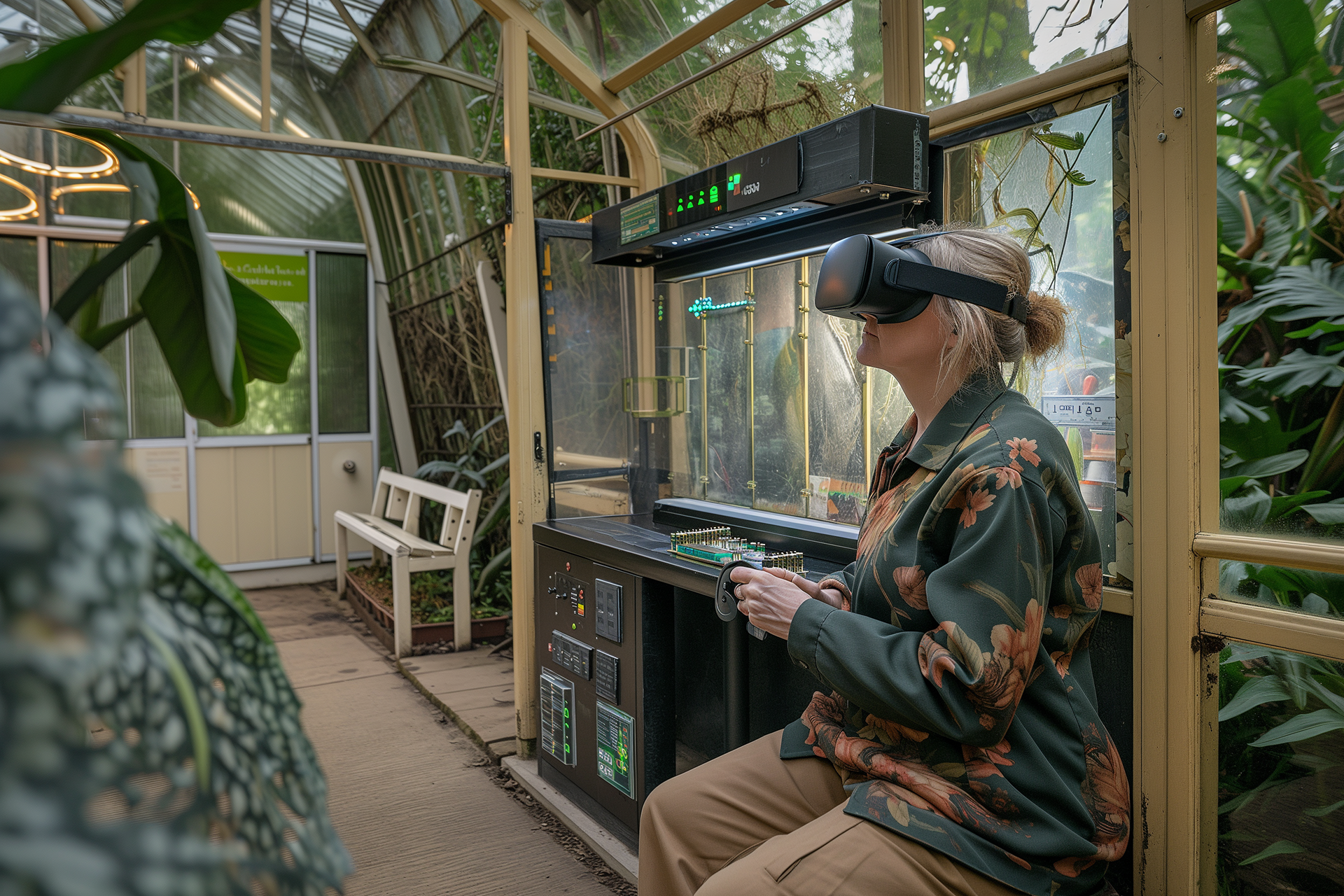The Integration of Virtual Reality in Plant Monitoring
In the realm of botanical science and conservation, the integration of technology has always played a pivotal role in advancing our understanding and interaction with the natural world. One of the most intriguing and potentially transformative technologies being explored today is the use of Virtual Reality (VR) in monitoring plant health. This concept, while still largely hypothetical, opens up a world of possibilities for both researchers and enthusiasts alike.
The Concept:
Imagine walking into a botanical garden, where each plant is connected to a sophisticated VR system. Equipped with sensors, these plants relay real-time data on various health parameters such as soil moisture, nutrient levels, and sunlight exposure. This data is then visualized in a VR interface, allowing users to "see" the health of plants in an immersive and interactive environment.
Sensors on Plants
Key Components:
Sensors on Plants: Advanced sensors attached to plants measure vital health indicators, transmitting this data to a central VR system.
VR Interface: Users, wearing VR headsets, can access a visual representation of the plant health data, with interactive features enabling a deeper understanding of each plant's condition.
Data Analysis: The system employs machine learning algorithms to analyze the data, offering insights and predictive care recommendations.
Benefits:
Enhanced Monitoring: This system provides a more intuitive and comprehensive way to monitor plant health, making it easier to identify and address issues.
Educational Value: It serves as an innovative educational tool, offering an engaging way to learn about plant biology and ecology.
Research Applications: The detailed data collected can be invaluable for scientific research, aiding in the study of plant growth and health under varying conditions.
VR Interface
Real-World Context:
While the full realization of this concept is still on the horizon, current advancements in VR and plant monitoring technologies suggest its feasibility. For instance, the use of VR in visualizing biological data is already being explored, as discussed in the paper "VR Based Visualization and Exploration of Plant Biological Data" (Read here). Additionally, the role of technology in nature conservation, including speculative theories on its future applications, is examined in "Digital technology and the conservation of nature" (Explore here).
Speculative Theories and Future Directions:
The integration of VR in plant monitoring aligns with broader speculative theories on the role of technology in aiding nature. As we advance, the potential for technology to not only assist in conservation efforts but also to foster a deeper connection between humans and the natural world becomes increasingly apparent. The article "Identifying conservation technology needs, barriers, and opportunities" (Read more) delves into the current state and future needs of technology in conservation, providing insights that could shape the development of VR-based plant monitoring systems.
In conclusion, the hypothetical integration of VR in plant monitoring represents a fascinating intersection of technology and nature. It's a concept that not only promises to revolutionize the way we interact with and care for plants but also offers a glimpse into a future where technology enhances our understanding and appreciation of the natural world.
Exploring the Possibilities:
The idea of using VR to communicate with plants, while speculative, is not far-fetched considering the rapid advancements in technology. It's a concept that resonates with the growing trend of 'digital conservation', where technology is used to protect and study the environment. This approach is detailed in the article "Digital technology and the conservation of nature" (Read here), which discusses how digital innovations are reshaping conservation practices.
Challenges and Considerations:
While the integration of VR in plant monitoring is promising, it's important to consider the challenges and ethical implications. The technology must be developed in a way that is sustainable, accessible, and does not harm the natural environment. Additionally, there's a need to ensure that such technology does not widen the gap in accessibility, especially in regions with limited technological infrastructure.
Looking Ahead:
As we venture further into this integration of VR and botanical care, it's crucial to continue exploring and understanding the role of technology in nature conservation. The potential benefits are vast, from enhanced plant care to deeper ecological insights. However, it's equally important to approach this integration with caution, ensuring that technology serves as a tool for good, aiding in the preservation and understanding of our natural world.
In essence, the hypothetical integration of VR in plant monitoring is more than just a technological advancement; it's a step towards a deeper, more harmonious relationship with nature. It's a concept that challenges us to rethink our interaction with the natural world and explore new ways to protect and understand it.


